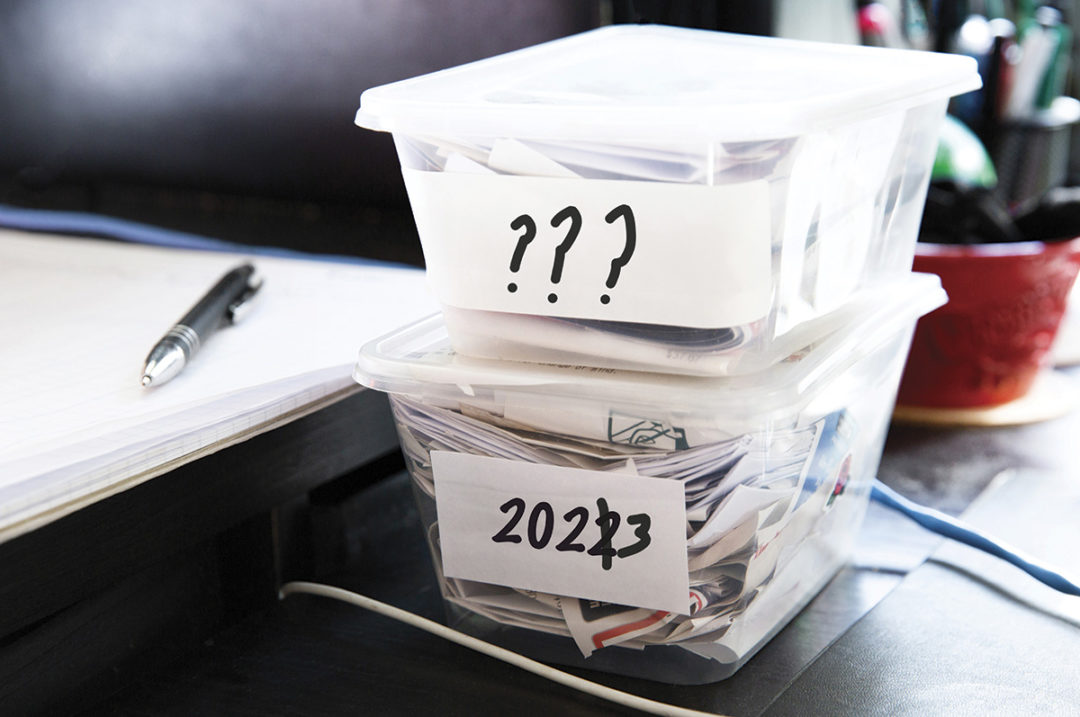Another year, another season of taxes. It’s the same time every year, but for many of us, the time seems to sneak up as the days go by quickly. Given that tax time rolls around this time each year, take the hassle and stress out of gathering records by having a good record-keeping and receipt system in place that you use and update throughout the year.
A common receipt system is the traditional “shoebox” method. This involves having a shoebox for cattle and ranch receipts and putting receipts in it as you go. While this is a quick and easy way to keep receipts, there are several drawbacks to this method. The shoebox is not a secure method – if something happens to the shoebox, the receipts are gone. Also, the receipts are just data points – there’s no way to easily analyze the spending by category, totals, etc. Additionally, it’s hard for your accountant, tax preparer or other people to help you do much with a box of papers. The information must still be transferred to an electronic method, such as a computer system, for more accurate and beneficial decision-making analysis.
Want a better and easier way? Using an electronic system to enter activities as they happen is a great way to make tax time less stressful and make the most of your accountant or tax preparer’s time reporting income, expenses, depreciation and more. Some cattle software programs and ranch software programs include income and expense tracking – ways for you to enter information such as purchase price and date, vendor, payment amount and method, and more. Many also have a way to upload a photo or PDF version of the receipt, so you have the proof right there with the transaction. Reports are generally easy to generate and run – filter by date range, type of income and expense and more. These reports help your tax preparer have these essential details right at their fingertips to fill in needed boxes and have an accurate picture of your financial responsibility at tax time.
While tax rules can and do change each year, your organized records make it easier for you and your tax preparer or accountant to focus on plans and strategies for paying only the amount of tax you need – no more, no less. This helps plan for tax time and take the guesswork and unknown out of the time of the year when others are stressed and tax professionals are already overloaded with helping other clients. You can be on the good list for your organized handy reports and receipts as proof of purchases and sales in case of any questions or issues.
While good record-keeping is certainly beneficial when it comes to tax time, an added bonus is that you can track and analyze your financial position throughout the year. As the year draws to a close, knowing your income and expense financial totals can help you decide if you need to spend a bit more on the tax year or hold off selling calves for a few more weeks due to the market or financial conditions.
You can be the client your tax preparer is happy to see and ready to assist with your excellent record details and organization system. While this should not change the outcome of your tax implications, they will most likely be more helpful with sharing knowledge and advice, seeing that you have put in time and effort to do your part in the tax preparation process.









